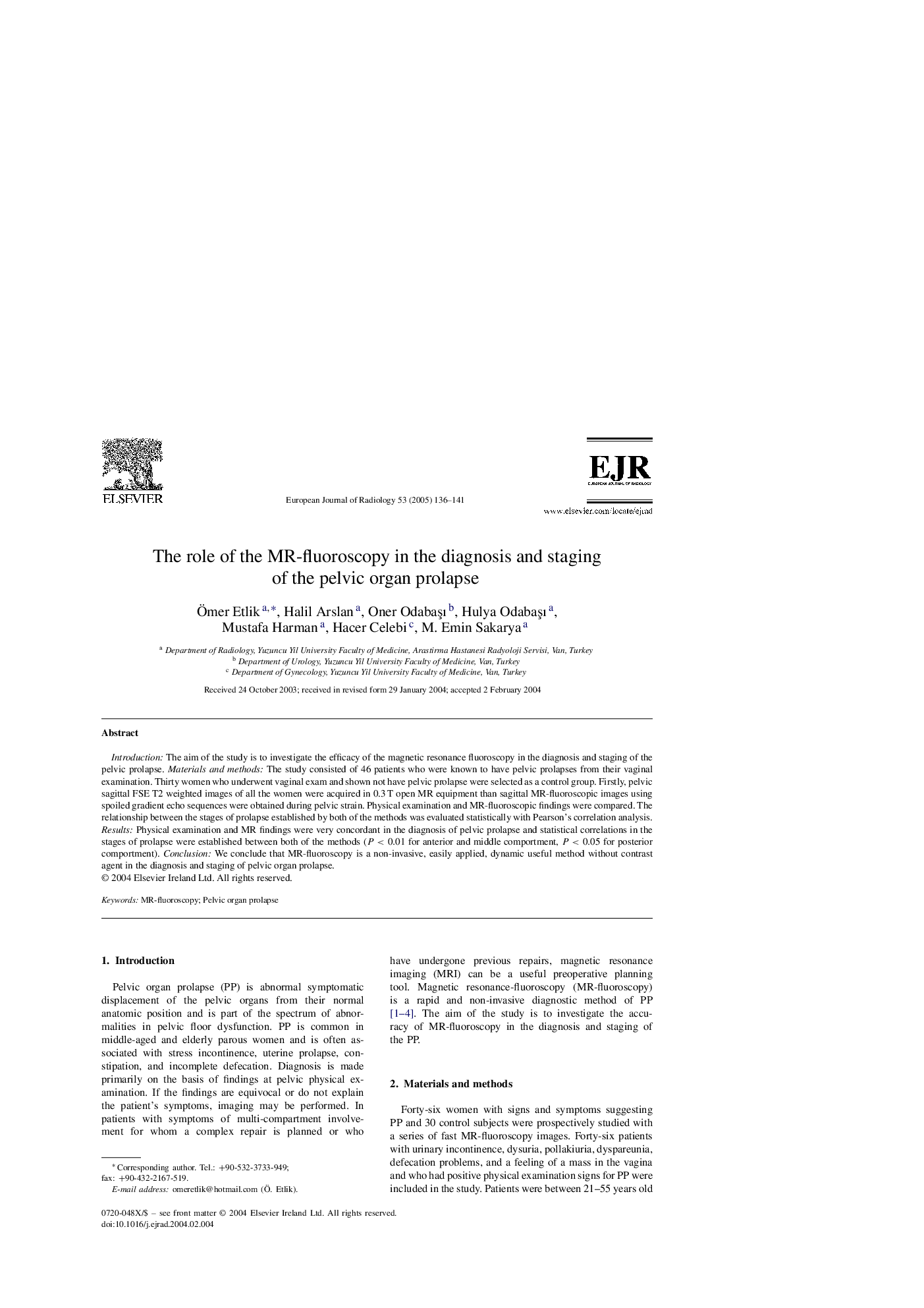| Article ID | Journal | Published Year | Pages | File Type |
|---|---|---|---|---|
| 10097658 | European Journal of Radiology | 2005 | 6 Pages |
Abstract
Introduction: The aim of the study is to investigate the efficacy of the magnetic resonance fluoroscopy in the diagnosis and staging of the pelvic prolapse. Materials and methods: The study consisted of 46 patients who were known to have pelvic prolapses from their vaginal examination. Thirty women who underwent vaginal exam and shown not have pelvic prolapse were selected as a control group. Firstly, pelvic sagittal FSE T2 weighted images of all the women were acquired in 0.3Â T open MR equipment than sagittal MR-fluoroscopic images using spoiled gradient echo sequences were obtained during pelvic strain. Physical examination and MR-fluoroscopic findings were compared. The relationship between the stages of prolapse established by both of the methods was evaluated statistically with Pearson's correlation analysis. Results: Physical examination and MR findings were very concordant in the diagnosis of pelvic prolapse and statistical correlations in the stages of prolapse were established between both of the methods (P<0.01 for anterior and middle comportment, P<0.05 for posterior comportment). Conclusion: We conclude that MR-fluoroscopy is a non-invasive, easily applied, dynamic useful method without contrast agent in the diagnosis and staging of pelvic organ prolapse.
Keywords
Related Topics
Health Sciences
Medicine and Dentistry
Radiology and Imaging
Authors
Ãmer Etlik, Halil Arslan, Oner OdabaÅı, Hulya OdabaÅı, Mustafa Harman, Hacer Celebi, M.Emin Sakarya,
